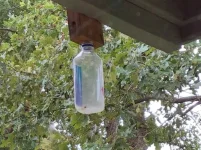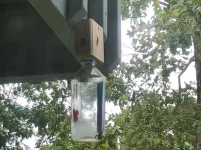JHZR2
Staff member
First off, I want to avoid killing any honeybees or other beneficial bees. So I don’t want to slather poisons everywhere.
A set of garages that I own have had an influx of carpenter bees burrowing into the exposed roof sheathing. I guess it’s soft wood that’s not treated?

I don’t want this to get worse. It only seems to be in the exposed roof sheathing that makes the eaves… at least right now.
I plan to either epoxy or caulk up the holes, but what else should I do?
A set of garages that I own have had an influx of carpenter bees burrowing into the exposed roof sheathing. I guess it’s soft wood that’s not treated?
I don’t want this to get worse. It only seems to be in the exposed roof sheathing that makes the eaves… at least right now.
I plan to either epoxy or caulk up the holes, but what else should I do?


